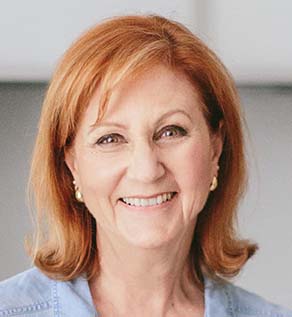Have you spend a lifetime trying to figure out which foods cause your horrible IBS symptoms? We now know more than ever before what the possible culprits can be. However, we are all individual and my final diet which keeps away IBS symptoms will not look like yours. It takes a good degree of detective work to figure it out. My video will give a good overview of the worst culprits.
The Transcript
Today, I want to talk about the main foods that could be triggers of your IBS symptoms.
We know now that the FODMAPs in foods can cause symptoms of IBS, and the FODMAPs are the short-chain carbohydrates. We have to avoid high FODMAP foods. There are four main groups, and it’s very unusual for somebody to have a problem with all of the groups. You could possibly have one group as main trigger. For example, fructose is my main trigger. Lactose I don’t have a problem with at all, and the other two groups I can eat a certain amount before I get symptoms. So, we’re all individual and that’s what you have to find out from doing the elimination diet and then the reintroduction diet. Let’s look at these groups.
Fructose
The fructose group, the main things- and I’m not saying this is everything – to stay away from are apples and pears, watermelon, and cherries. You also have to stay away from honey and agave syrup because the content of the fructose in them is higher than the content of the glucose and that creates a problem for us. Whereas table sugar, which has 50% glucose, 50% fructose, is not such a problem. We can’t eat too much of it, but we can have it in small amounts.
Lactose
Let’s move on to lactose. That’s another of the FODMAP groups. You can have lactose-free milk and yogurt, and you can also have the hard, mature cheeses that have lost much of their lactose in the processing. Also, there are several soft cheeses that have lost much of the lactose in the liquid that is discarded in the processing, like cottage cheese, ricotta and mozzarella. But other dairy foods, and this includes cows, goats and sheep as well, they are not allowed on the low-FODMAP diet and will cause you to have symptoms. So, go for the low-lactose or lactose-free foods.
Polyols
The next group is polyols, which are broken down into sorbitol and mannitol. Foods that you have to stay away from for sorbitol are the stone fruits – those delicious summer fruits. They have high sorbitol, unfortunately. Again it depends if that’s one of your triggers. The other fruits that have sorbitol are apples and pears. So apples and pears have both the fructose and the sorbitol. In fact, many of the fruits have more than one group in them. The other polyol is mannitol, so stay away from cauliflower, mushrooms, too much sweet potato. You can have half a cup of sweet potato, and that’s fine. But a full cup has too many FODMAPs for us, so limit your sweet potato. While I think about it, the other one for sorbitol is avocado, which actually is considered a fruit, and that’s too high in sorbitol. You can have a tiny amount of it though before it becomes too high.
Oligosaccharides
The last group to look at is the oligosaccharides, which again is broken into two subgroups, the fructans and the galacto-oligosaccharides. The galacto-oligosaccharides are legumes and pulses. Everybody in the population has a problem with those. In fact, it’s well known that they create gas. But for those of us with IBS, this becomes a major problem so we do have to stay away from them. There are some nuts that also contain galacto-oligosaccharides and that we can’t eat. They are cashews and pistachio. As far as I’m concerned, they are the nicest nuts, but we can’t touch them. Also, just be aware that almonds after ten become high also in galacto-oligosaccharides. The other subgroup is the fructans, and you have to avoid wheat, barley, and rye. Also, in the vegetable field, stay away from onions and garlic, and also the white part of leeks, the white part of spring onions. Those are your main vegetables to stay away from for the fructans.
Other Triggers
Apart from the FODMAPs in food, there are a few other triggers that most of you probably already know about. That is if you have too much fat or too much fiber, alcohol and caffeine. So, it’s not just about the FODMAPs. While you’re doing the elimination diet and the reintroduction diet, keep those four things in mind as well as you go through it. Hopefully, by the end of it all, you will have the perfect final diet for you and your own individual situation and relationship with IBS. We are all different, and your diet will look different from mine, which will look different from your neighbor’s with IBS.
Good luck with working it all out.




Oh dear! So many of my favourites are on this list – cherries, stone fruits, cashews and pistachios! What a shame xx
Mine too! But never mind, I still have heaps of other things I can eat and enjoy.
I also have diverticulitis which eliminates other foods too. Thank goodness I love salads with any vegets I can eat and protein. Every once in a while I splurge on blue cheese or feta, some peanut butter too but mainly try my best to stay on track. I do drink lots of coffee though and ice coffee in the afternoon. This I must cut all the way down since I appear 5 months pregnant by dinner time. I blow up like a balloon and I assume it is the coffee. I also lived on apples – perhaps 3 per day, until this site said no. Too bad too since I cannot find anything to replace the crunch and sweetness. I really really miss my apples.
Be a little careful with all those salads. Many vegetables are high Fodmap and we have to eat even the low Fodmap ones in moderation – never too many together but spread out during the day.
Yes, coffee will be playing havoc with your gut. Caffeine is a gut irritant.
To keep your stomach flat, you have to do the low Fodmap diet accurately because even one wrong food and it will bloat. It’s not simple but well worth doing.
Hi,
I discovered the low fodmap diet this year whilst looking up help with my IBS. I did the elimination diet. After three weeks on it I began to feel great, for the first time in years. I now have a problem. I cannot tolerate any of the fodmap groups. It seems to hereditary. Anyway, After trying some new foods, or even just eating more low fodmap veggies and fruits my symptoms are coming back. I have a very very slow digestion. And it takes at least three days for reactions to be seen in my gut. Plus bad constipation. This makes determining what things were the culprits. I am concerned that going back and eating low fruit and veggies will be bad for me. I eat very healthy. But even in your cookbook putting together a meal with all the fruit and veggie suggestions would be too much. Because it is over three days. I usually have cinnamon toast or poached egg and toast for breakfast. Lunch is a veggie or two with protein, maybe a carb, rice, toast, few chips. Dinner is meat, carb, couple small amount of veg. Ex. 4 green beans, quarter of a pepper, arugula…
I do not have a dietician in my area that knows about the diet. I cannot do your program, but I would like to know if you have helpful hints. Thanks.
What you are eating sounds fine but do check for any nasty ingredients in the bread you are eating. Additives are our enemy.
The other thing to look at is resistant starches. Google them and see if this could be your issue. Several of my clients have problems with them.